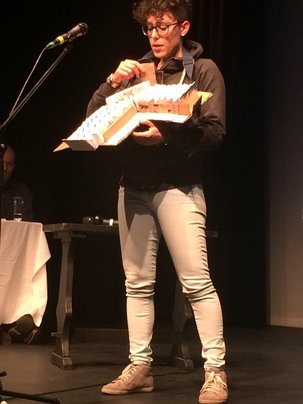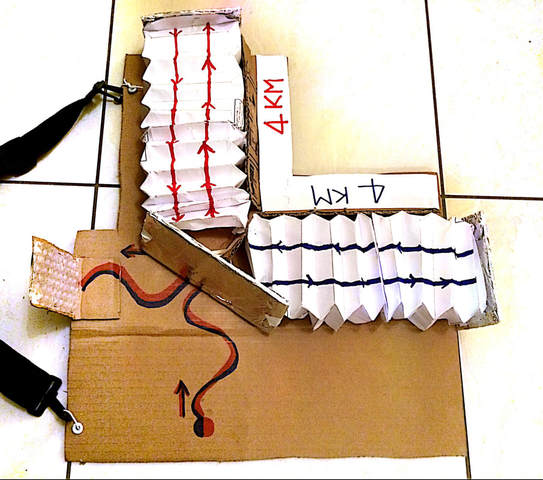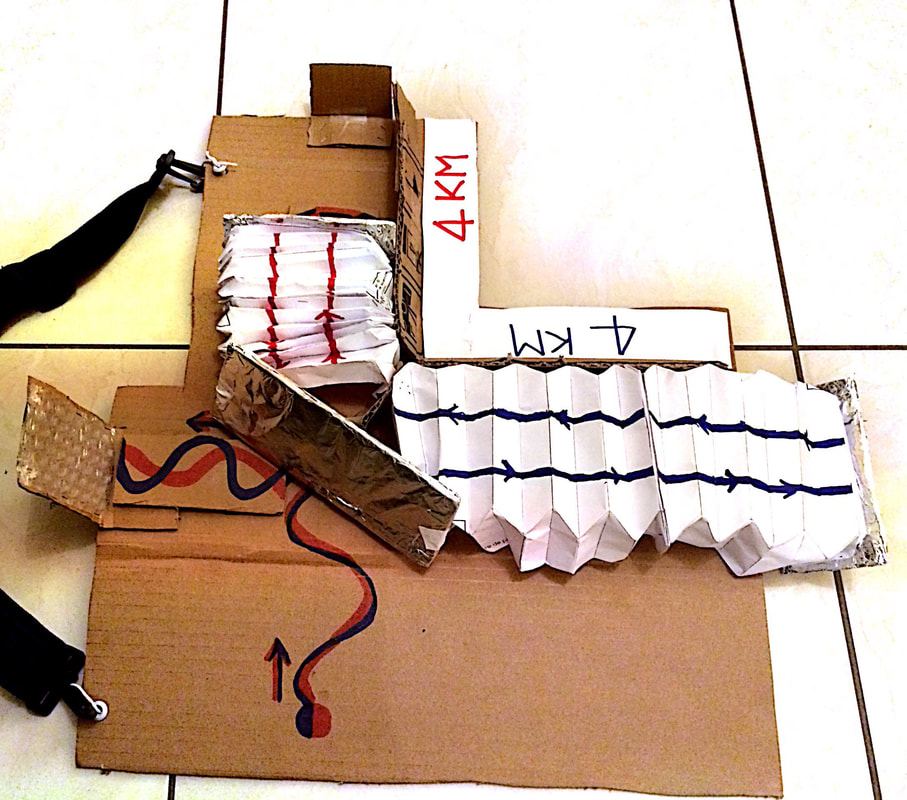Outreach
FameLab Galway 2018
Here is my 3-minute talk!
"The invisible universe"
 This is me with the home-made model of LIGO, the interferometer used to detect the first gravitational wave.
This is me with the home-made model of LIGO, the interferometer used to detect the first gravitational wave.
The universe we all live in is populated by plenty of celestial objects: planets, stars, satellites, asteroids. With a telescope, we are able to see even the farthest galaxies those that are million light years far from the Earth. But, out there in the space, invisible black holes are hidden to our eyes; we wouldn’t be able to see them even with the most powerful telescope in the world.
How can we find these invisible objects?
Well, to answer this question I’ll bring you into the invisible world of black holes..
A black hole is a region of the space-time in which the light gets lost. That’s why black holes cannot be seen. Actually not only the light... everything that falls into a black hole is trapped there in the darkness forever and cannot escape from it! Planets, stars, satellites, even Tesla cars.
According to Einstein and its general relativity theory, when two black holes collide and merge into an even more gigantic black hole, not a flicker of light is produced. However, they generate a massive gravitational wave. Imagine a stone thrown in a lake. When the stone hits the surface of the water, it creates ripples. In the same way, in the exact instant of collision between two black holes, a gravitational wave starts its unimpeded journey into the universe creating ripples of the space-time.
It travels and travels for billion of light years squeezing and stretching the space and time it passes through. So people have known about their existence for decades, but nobody has been able to catch a gravitational wave until last year. The first wave has been caught thanks to a super sophisticated measuring device called LIGO. This is how LIGO works: it sends a laser beam through a central mirror that splits the beam along two paths. Each of the two beams travels along a 4km arm and is reflected back towards the central mirror. Here, the two beams are recombined and eventually sent to a detector. When a gravitational wave hits LIGO, it compresses the space along one arm and stretches it along the other. This changes the time it takes the two light beams to travel along the arms and produces a shift between them. So that when they recombined in the central mirror a signal is generated and sent to the detector. This signal is the sound of the passage of a gravitational wave generated perhaps billions of light years ago by two colliding invisible black holes. This is how we listen to the heartbeat of the universe and we see the invisible.
How can we find these invisible objects?
Well, to answer this question I’ll bring you into the invisible world of black holes..
A black hole is a region of the space-time in which the light gets lost. That’s why black holes cannot be seen. Actually not only the light... everything that falls into a black hole is trapped there in the darkness forever and cannot escape from it! Planets, stars, satellites, even Tesla cars.
According to Einstein and its general relativity theory, when two black holes collide and merge into an even more gigantic black hole, not a flicker of light is produced. However, they generate a massive gravitational wave. Imagine a stone thrown in a lake. When the stone hits the surface of the water, it creates ripples. In the same way, in the exact instant of collision between two black holes, a gravitational wave starts its unimpeded journey into the universe creating ripples of the space-time.
It travels and travels for billion of light years squeezing and stretching the space and time it passes through. So people have known about their existence for decades, but nobody has been able to catch a gravitational wave until last year. The first wave has been caught thanks to a super sophisticated measuring device called LIGO. This is how LIGO works: it sends a laser beam through a central mirror that splits the beam along two paths. Each of the two beams travels along a 4km arm and is reflected back towards the central mirror. Here, the two beams are recombined and eventually sent to a detector. When a gravitational wave hits LIGO, it compresses the space along one arm and stretches it along the other. This changes the time it takes the two light beams to travel along the arms and produces a shift between them. So that when they recombined in the central mirror a signal is generated and sent to the detector. This signal is the sound of the passage of a gravitational wave generated perhaps billions of light years ago by two colliding invisible black holes. This is how we listen to the heartbeat of the universe and we see the invisible.
(Special thanks to my dad Walter for his precious help with "manufacturing" the model)
Maths lessons in middle school
In collaboration with Convitto Nazionale Umberto Primo (Turin, Italy) I organised 9 lessons on different maths topics. In this occasion, my students were 11 to 13 years old pupils! They learned about the Maths of the bicycle, the mechanics of the brain, the shape of the gut and how to "watch" the sound.
Big Bang fair
Wanna know what's the science behind ribbon curling? We explained it at The Big Bang Fair 2016, NEC Birmingham, UK


